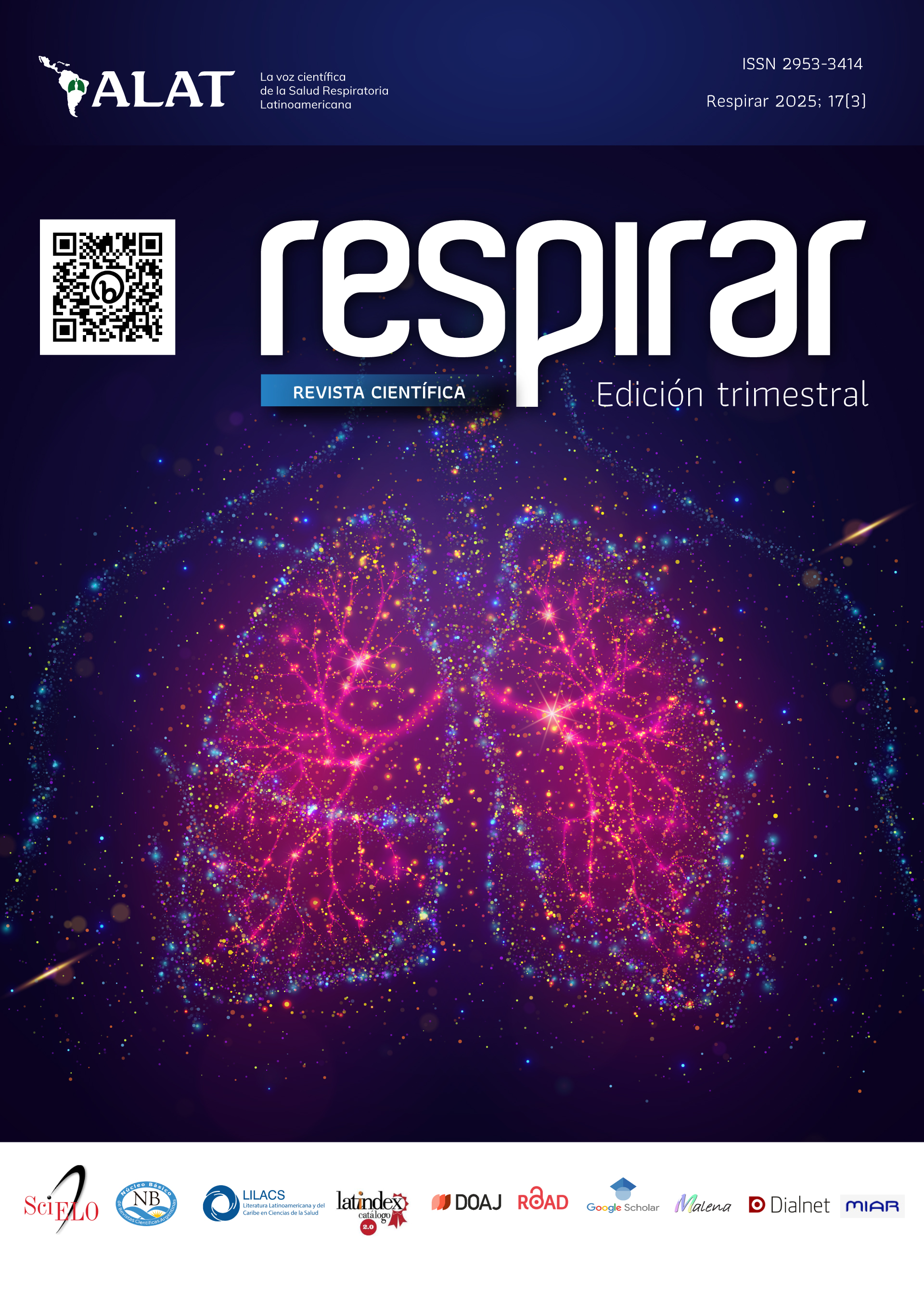EBUS-L in a Latin American Interventional Respiratory Endoscopy Center: Diagnostic Performance, Correlation with PET SUV and Lymph Node Size. A Real-Life Study
Main Article Content
Abstract
Introduction: This study presents the experience with linear endobronchial ultrasound (EBUS-L) in the Interventional Respiratory Endoscopy Unit of Hospital Maciel from November 2019 to February 2023.
Methods: A total of 122 procedures were analyzed, with the primary objective of EBUS being the staging and diagnosis of bronchopulmonary cancer, which accounted for 49.1% of the cases.
Results: The analysis focused on the correlation between malignant etiology and two main variables: the size of the lymphadenopathy and its standardized uptake value (SUV). Notably, a high rate of adequate samples (98.4%) was achieved and a statistically significant relationship was found between lymphadenopathy ≥ 15 mm, an SUV in PET-CT ≥ 3.75, and malignant etiology.
Conclusion: The findings indicate that EBUS-L is an effective tool for the staging and diagnosis of bronchopulmonary cancer, particularly in cases with larger lymphadenopathy and elevated SUV values.
Article Details
Section

This work is licensed under a Creative Commons Attribution 4.0 International License.
How to Cite
References
Bilal A. Jalil, Kazuhiro Yasufuku & Amir Maqbul Khan. Uses, Limitations, and Complications of Endobronchial Ultrasound. Proc (Bayl Univ Med Cent) 2015;28(3):325-30. Doi: 10.1080/08998280.2015.11929263
Wahidi MM, Herth F, Yasufuku K et al. Technical Aspects of Endobronchial Ultrasound-Guided Transbronchial Needle Aspiration: CHEST Guideline and Expert Panel Report. Chest 2016;149(3):816-35. Doi: 10.1378/chest.15-1216.
Matilla J. Monografía cáncer de pulmon. Clínica respiratoria SEPAR 2017;6-223.
Farsad M. FDG PET/CT in the Staging of Lung Cancer. Curr Radiopharm 2020;13(3):195-203.
Herth FJ, Eberhardt R, Krasnik M, Ernst A. Endobronchial ultrasoundguided transbronchial needle aspiration of lymph nodes in the radiologically and positron emission tomography normal mediastinum in patients with lung cancer. Chest 2008;133:887-91. Doi: 10.1378/chest.07-2535.
Yasufuku K, Nakajima T, Motoori K et al. Comparison of endobronchial ultrasound, positron emission tomography, and CT for lymph node staging of lung cancer. Chest 2006;130(3):710-8. Doi: 10.1378/chest.130.3.710.
Counts S, Kim AW. Diagnostic Imaging and Newer Modalities for Thoracic Diseases. Surgical Clinics Of North America 2017;97(4):733-750. Doi: 10.1016/j.suc.2017.03.012
Mazzone PJ, Vachani A, Chang A et al. Quality indicators for the evaluation of patients with lung cancer. Chest 2014;146:659-69. Doi: 10.1378/chest.13-2900.
Fielding DI, Kurimoto N. EBUS-TBNA/staging of lung cancer. Clin Chest Med 2013;34(3):385-94. Doi: 10.1016/j.ccm.2013.06.003.
Nakajima T, Yasufuku K, Yoshino I. Current status and perspective of EBUS-TBNA. Gen Thorac Cardiovasc Surg 2013;61(7):390-6. Doi: 10.1007/s11748-013-0224-6.
Mets O, Smithius R. TNM classification 9th edition. The Radiology Assistant 2025. [Internet]. [Consultado 3 ene 2025]. Disponible en: https://radiologyassistant.nl/chest/lung-cancer/tnm-classification-8th-edition-1
Vilmann P, Frost Clementsen P, Colella S et al. Combined endobronchial and esophageal endosonography for the diagnosis and staging of lung cancer: European Society of Gastrointestinal Endoscopy (ESGE) Guideline, in cooperation with the European Respiratory Society (ERS) and the European Society of Thoracic Surgeons (ESTS). Eur J Cardiothorac Surg 2015;48:1–15. Doi: 10.1055/s-0034-1392040
